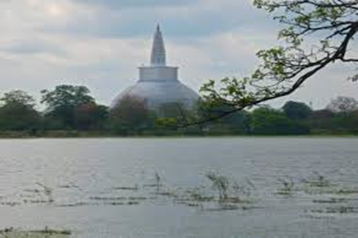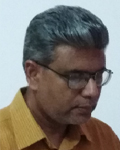Till Sun and Moon Shines [Part 6]
By Eng. Chandana JayawardanaTurning towards histories for directives towards futures.
Previous parts of this series were dedicated to discuss the 'sustainability' as perceived in different contexts and different approaches suggested to achieve the sustainability goals. As far as these approaches are concerned, we, Sri Lankans, do have an advantage over many of the nations in the world. With archaeologically proven urbanized settlements since 7th century BCE and literally recorded history since 3rd century BCE, Sri Lanka is a land of many ancient engineering accomplishments scattered all over the island. Many of them are in dilapidated state serving no practical purpose today, but some are still serving us, virtually fulfilling the original function they were supposed to fulfill. This long-term functioning may give us some direction to think of sustainability in a different perspective.
A sticking example of this type of sustainability is visible when we visit the Abhaya veva bund at Anuradhapura. Considered to be the earliest reservoir built around the city of Anuradhapura, Abhaya veva is dated to the reign of king Pandukabhaya (circa 4th century BCE) (Mahavamsa x:89). Henry Parker's below words may do the justification to this ancient work, "It is sometimes mentioned casually in the early part of the histories - in the time of Pandukabhaya and subsequently - always as a reservoir in working order ; and it appears to have remained unbreached as long as Anuradhapura was inhabited - that is, for more than 1500 years, a respectable record for a work of such early date. Of no structures can it be said more truly than of reservoirs, that the most successful works have no history. Decade follows decade, century succeeds century, and while the work is performing its functions satisfactorily there is nothing in its life that is worth recording, except the levels of the water in it year by year" (Parker: 361).
Over the waters of Abhaya wewa, the dome and the spire of Ruwanweliseya is visible in shining white. Its construction is dated back to the reign of king Dutugemunu (161-137 BCE) (Mahavamsa xxix:1-70), and up to date, one of the world's tallest ancient monuments. The stupa is surrounded by large paved terraces and platforms, gate ways, walls and image houses which add to the beauty of the place.

Ruwanweliseya over the waters of Abhaya veva
Obviously both Abhaya veva and Ruwanweliseya would have been subjected to dilapidation over the time, but with necessary renovation and maintenance works, still stands fulfilling the functions they were originally supposed to fulfil. Abhaya veva still caters the water requirements of all sectors and Ruwanweliseya is one of the major iconic saririkacetiya occupying the most revered status in Buddhist minds. This is almost two thousand years after their original construction, and with necessary maintenance, will stand for many more centuries to come. Not only the Abhaya veva and Ruwanweliseya, but vast amount of man-made water works and monumental structures are scattered across the island, catering their original functions, with histories going back to thousands of years. Aren't these provide us some pragmatic examples for the sustainability? If we study their design and maintenance factors, wouldn't that provide us some guidelines for sustainability in engineering accomplishments? The coming parts of this column will be dedicated to discuss these areas, focusing on our histories to find out directives to our futures.
References
Parker, H., Ancient Ceylon, Asian Education Services, 2001
Mahava?sa, Wilhelm Geiger (trans.), Buddhist Cultural Centre, 2003
 Eng. Chandana Jayawardana has earned his first degree in Electrical Engineering from University of Moratuwa and then, post graduate qualifications in Industrial Engineering and Buddhist Studies. He is currently working as Design Manager, Balfour Beatty Ceylon (Pvt) Ltd, Katunayake.
Eng. Chandana Jayawardana has earned his first degree in Electrical Engineering from University of Moratuwa and then, post graduate qualifications in Industrial Engineering and Buddhist Studies. He is currently working as Design Manager, Balfour Beatty Ceylon (Pvt) Ltd, Katunayake.
